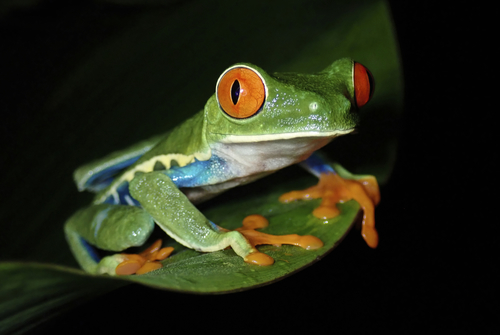
Red-eyed Tree Frog
With its vivid red eyes and vibrant green body, the red-eyed tree frog (Agalychnis callidryas) is a nocturnal marvel of the Central American rainforests. Its striking colors serve as a defense tactic, while its arboreal lifestyle plays a vital role in maintaining the ecosystem's balance.
5 years
Lifespan
5.6699 - 14.1747 g
Weight
Length: 5 - 8 cm
Size
Yellow, Red, Blue, Green, Orange
Color
2 years
Age of Sexual Maturity
Least Concern
Conservation Status
Decreasing
Population Trend
Characteristics
The Agalychnis callidryas, commonly known as the red-eyed tree frog, is known for its striking red eyes, vibrant green body, and blue and yellow striped sides. It inhabits the tropical rainforests of Central America, often found on leaves near water. This nocturnal species uses its vivid coloration as a defense mechanism to startle predators.
Distribution Range of the Red-eyed Tree Frog
Agalychnis callidryas, commonly known as the red-eyed tree frog, is native to the Neotropical region. It is primarily found in Central America, with its geographical distribution spanning from southern Mexico through Central America to northern Colombia. Notably, it inhabits countries including Belize, Costa Rica, Guatemala, Honduras, Nicaragua, and Panama.
Red-eyed Tree Frog's Habitat
Environmental Conditions
The red-eyed tree frog thrives in lowland tropical rainforests. Its habitat is characterized by warm, humid conditions typical of these rainforests. It requires environments with abundant moisture, which are often found near ponds, streams, or other bodies of water where they can breed.
Ecological Niche
Agalychnis callidryas occupies a niche as an arboreal species, spending the majority of its life in the forest canopy. It is primarily nocturnal and uses its distinctive red eyes as a startle mechanism to ward off predators. The species is highly adapted to life in trees, with specialized toe pads for climbing and a diet mainly consisting of insects and other small invertebrates.
Copyright @ Nature Style Limited. All Rights Reserved.
 English
English